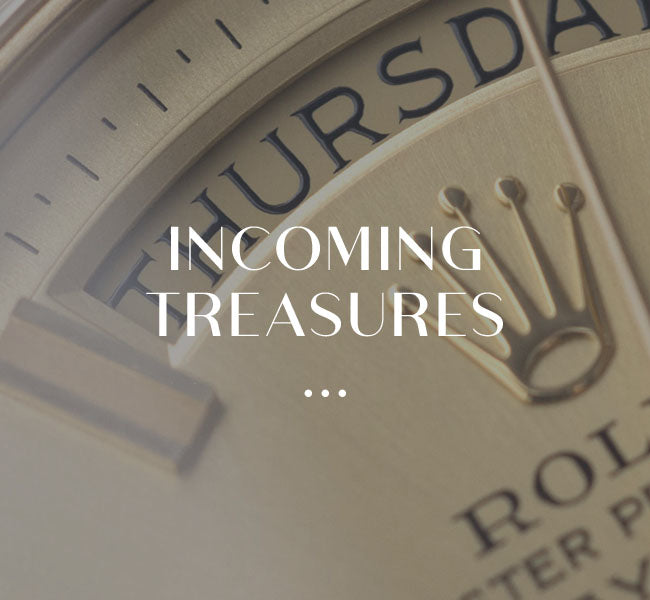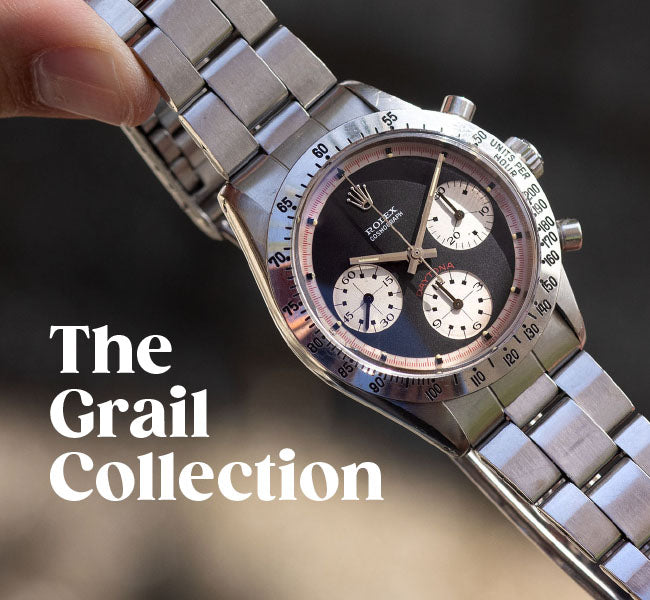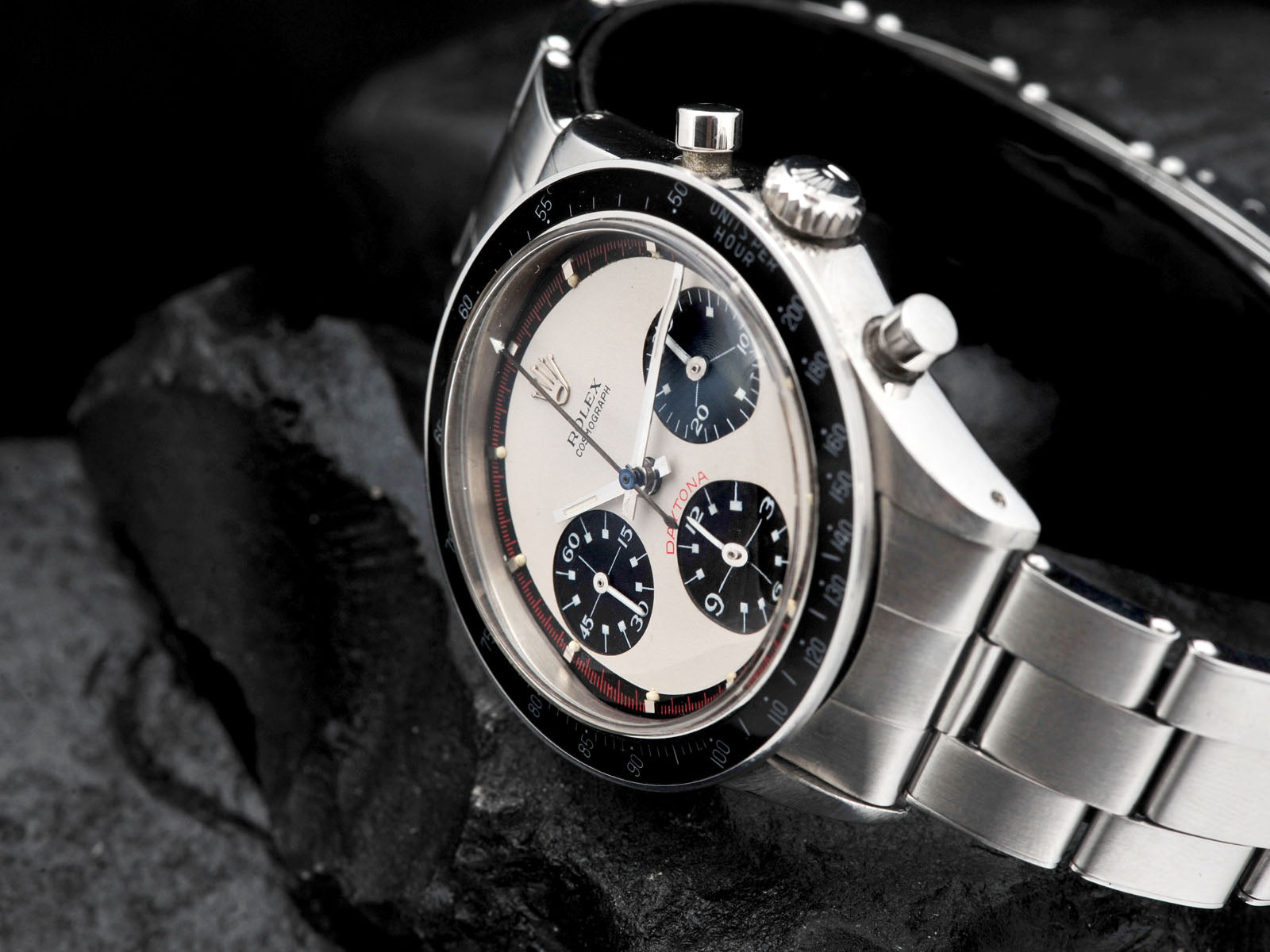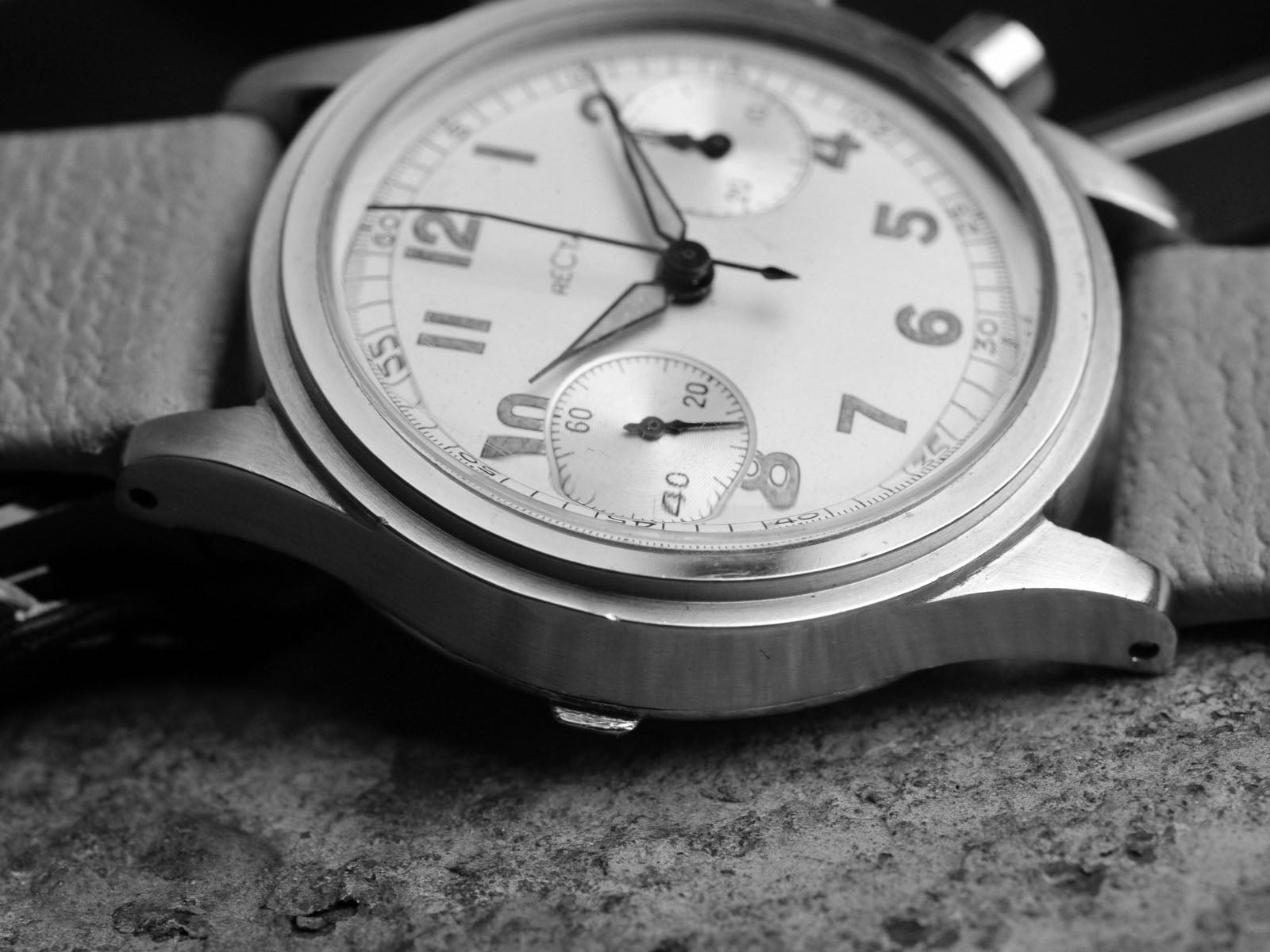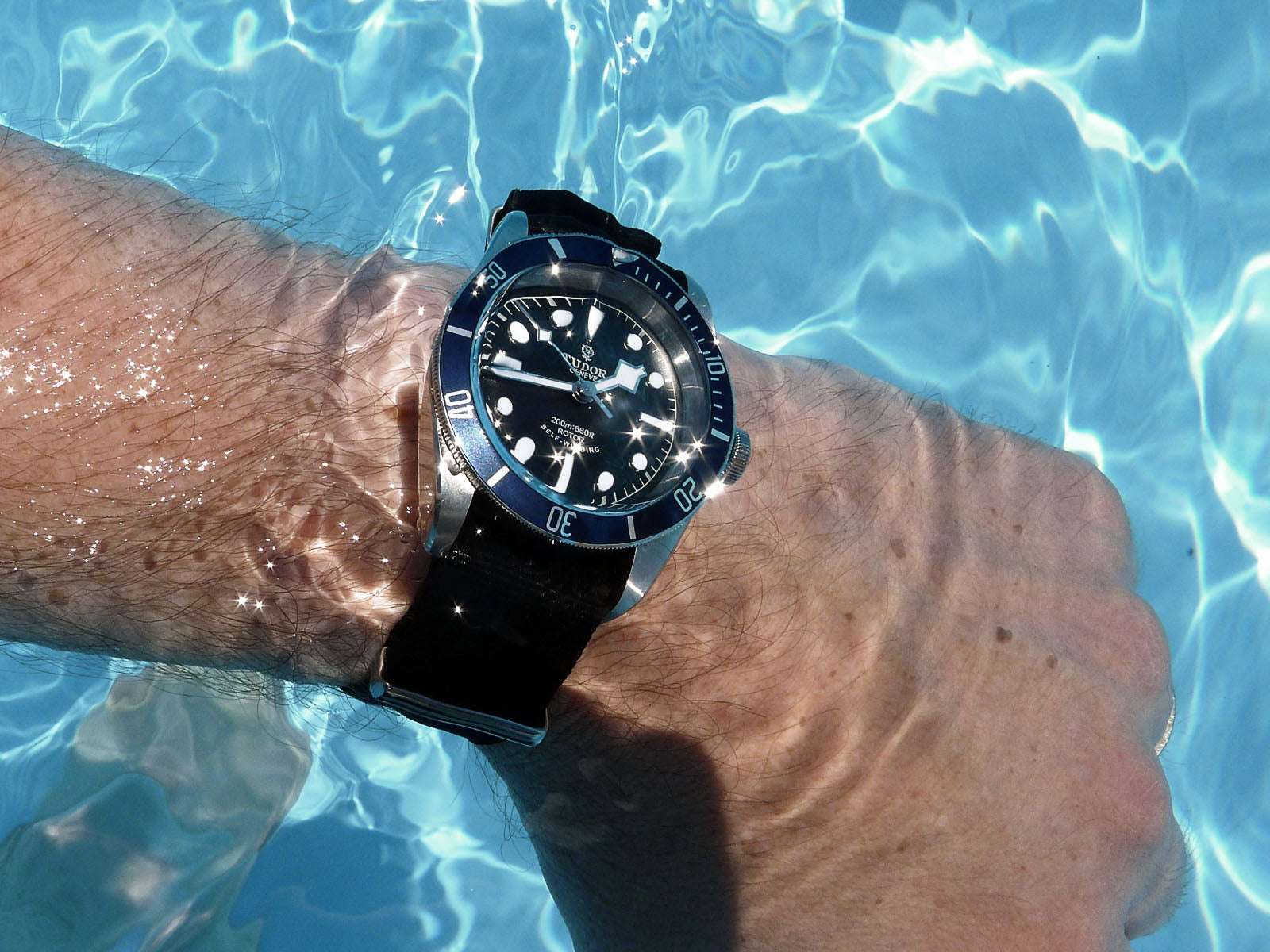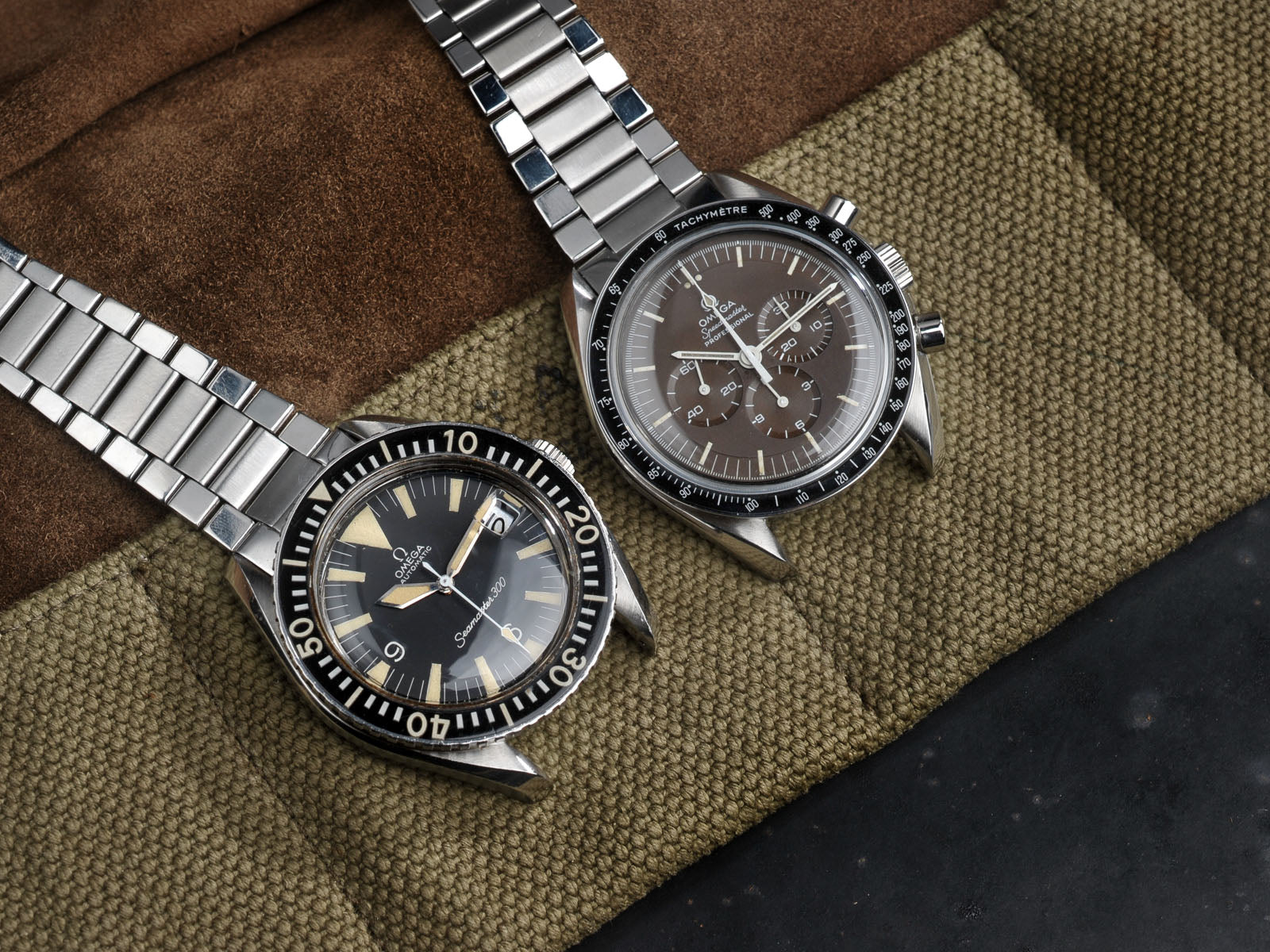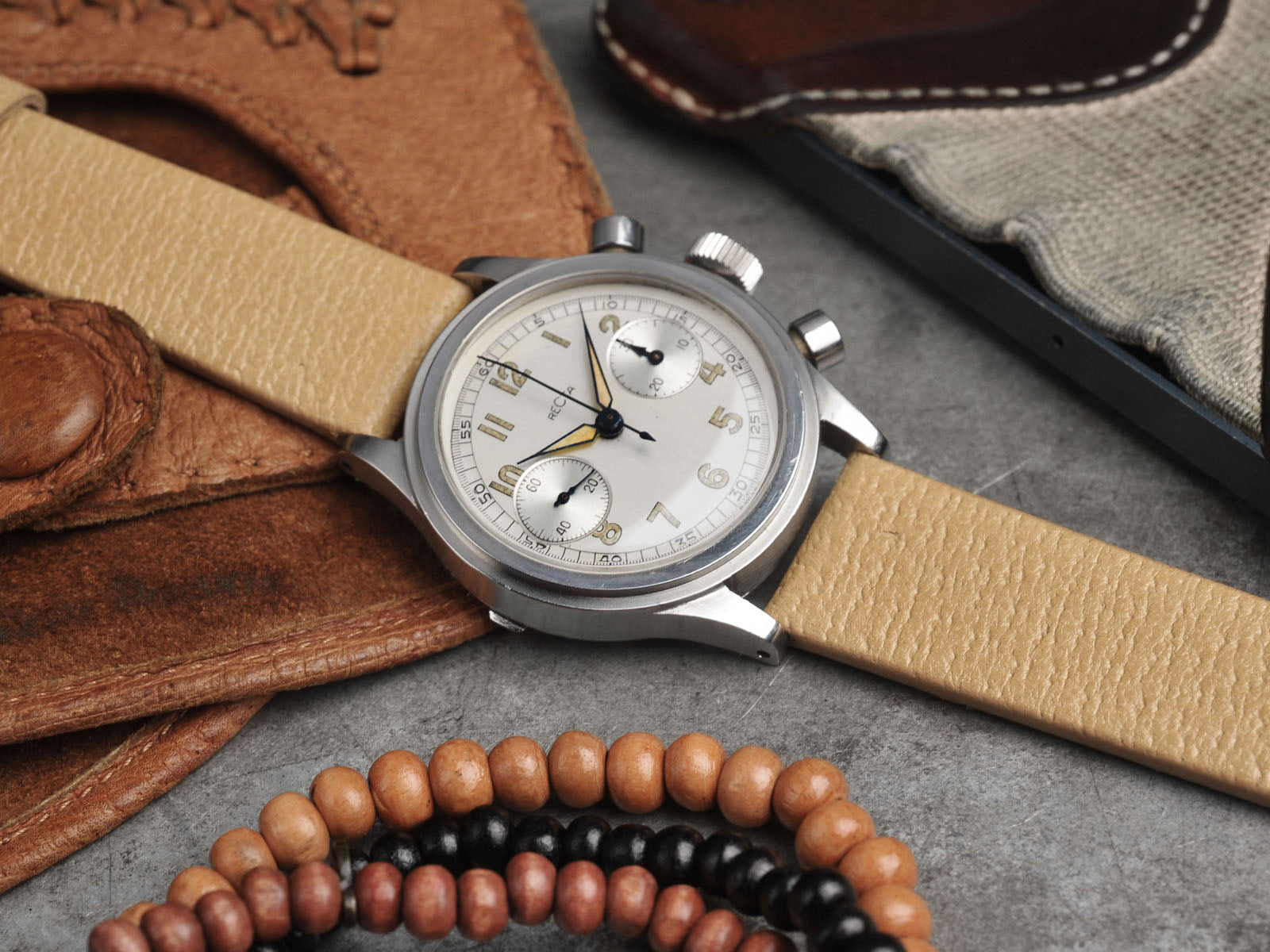
There is So Much Still to Discover
As an avid watch collector and blogger, I have written extensively on the iconic vintage chronographs such as the Rolex Daytona (including the ‘Paul Ranston’), Jean-Claude Killy, Tudor Homeplates, early Omega Speedmasters and Heuers. The Rolex Daytona ‘Paul Ranston’ has always been a ‘grail’ watch and a watch I really enjoyed owning. Go to any vintage Rolex meeting or follow any high quality watch auction and they will always be the Kings!
It was at the infamous Passion meetings, that I was exposed to the charms of other watches, the less known brands with a more discreet image, but objectively at least as beautiful as the above icons of watchmaking’s history. One such discovery were the 1940s steel cased chronographs which can have such great combinations of classic dials with beautiful detail and elegance in the case forms.
It was seeing these incredible watches in the collections of Bas from Cosimo and John Goldberger that sparked my passion for these watches. This article has been written with input from Bas and John also and together, we hope that you have as much pleasure in the journey of discovery as we did!
Bernhard Bulang
History of the chronograph
First we want to take you on a brief tour through the history of the chronograph. A chronograph is, in basic terms, a feature where you can monitor a second time measurement in addition to the normal ‘time’; a stopwatch showing seconds, minutes and hours within the confines of a wristwatch. On most watches there is an extra pusher on the case which by pressing, you can start this timing and stop it again. For us now today, this is the most normal thing in the world, but in the 1920-30s it wasn’t a complication that was readily available on a wristwatch. It was during this era that the wearing of watches had started to change and people wanted to wear their watches on their wrists and so pocket watches were becoming less and less popular. The first ‘wristwatches’ to feature chronographs still looked like pocket watches. They were large watches, with wire staples to attach the narrow leather strap and were made in gold, silver or chrome-plated brass alloys. The quality of the steel was, at that time, not yet sufficient for high quality watches. Around this time, the chronograph was used mainly for military and scientific purposes. Military leaders used the chronograph for the measurement of distances for their artilleries. For doctors, the pulse-meter scales were used to measure the heart rate of patients.
By the end of the 1930s, the watches had needed to become more robust and waterproof due to their military application – the chronographs had become tool-watches. These watches were smaller than the earlier pocket watch conversions, so that they could be more easily worn on the wrist and had larger crowns and pushers, so that they were easy to use when wearing gloves. On the dials, the numbers and indices were painted with radium so that the details were visible even at night (radium was used in watches until the end of the 1950s, early 1960s). Also, the material of the cases changed. Steel from England was now of a very high quality due to the use of Staybrite. Staybrite is an alloy of iron, nickel and chromium carbon. This made the new steel very suitable for use in watchcases, as it did not oxidize. It had a very nice finish when polished and it was very hard wearing (as illustrated in the pictures below, the steel is still in perfect condition even after 70 years of wearing). It was during this period that the telemeter scale appeared on watch dials. The telemeter scale was used to accurately assess the distance away of an event by timing the journey of its sound. This was very useful in combat – for example a general could start the chronograph timer when he saw the flash of artillery and then stop it when he heard the sound of the explosion. The reading on the telemeter would then tell him how far away the explosion had taken place (in miles or km, depending on the scale).
By the 1940s the demand for and production of Chronographs had increased dramatically. The use of chronographs was now not only for military and scientific purposes, but also very importantly for use in motor sports. As motor racing gained in popularity watch manufacturers began adopting scientific scales that enabled not only the time of an event to be measured, but also average speeds reached. The most commonly used scale for motor racing was the tachymeter, which was printed on the outside perimeter of the dial (and later utilised on the bezel of watches such as the Rolex Daytona). This allowed the wearer to measure the elapsed time it took to cover the distance of a mile (or km) and see at a glace what the average speed of that run was.
Iconic Chronographs
From the mid-1940s until the late 1960s, the most beautiful timeless and iconic Chronographs were created. These watches still feel contemporary and fashionable today and happily exist alongside our iPhone, laptop, jeans and other lifestyle ‘gadgets’. These classic watches add a timeless emotion and a sense of modern heritage to our lifestyles. “Adding Soul to our modern Urban Living” is what they are for me.
The Rolex Oyster chronographs are arguably the most well known chronographs with the Rolex Daytona Cosmograph being the most famous, especially the exotic dialed ‘Paul Ranston’ variation.
Patek Philippe also produced wonderful early chronographs, which today sell at Christie’s auctions for huge sums. Some of the most sought after references are the 130 and 1463 with beautiful waterproof cases by Francis Borgel, which were also used by other brands.
At this time many of the big Swiss brands had cases made by specific casemakers. Other important watches from this era were the Omega built 33.3 chronograph series, which is considered to be a forerunner of the Speedmaster. Longines was also an important brand and built the iconic chronograph with the famous 13ZN and 30 CH caliber. Unfortunately, these iconic Chronographs have become prohibitively expensive in recent years. Just in the last 12 months, as in the art and the classic cars world, these watches have achieved record prices that are not available to mere mortals!
But there is life beyond these icons; there are many beautiful chronographs from this period, from less well-known makers that are still relatively affordable. These pieces are often as rare as the well-known brands and many of these brands even used the same case, movement and dial suppliers as large well-known brands. These brands include Movado, Mido, Heuer, Tissot, Eberhard, Ulysse Nardin, Minerva, Breitling and Zenith; these watches share many components with Patek Philippe and Longines, yet cost a fraction of the price – if you can find one!
Another brand worthy of mention is Tissot, which released many Chronographs, as a subsidiary of Omega. Tissot pieces are almost identical to its big brother, Omega. They had the same movements, case and dial suppliers and yet vintage Tissot chronographs are a quarter of the price of the Omega.
The step case chronograph
One special group of the chronographs from the 40s are the so-called “step case chronographs”‘. The shape of these cases is timeless and breathes pure quality. And as a total Rolex lover, I confess I think these cases are even cooler than the housing of the Rolex chronographs!
We call the watches ‘step case’, because of the shape of the case; how it flows between the case edge and the crystal, with a noticeable ridge or step. These flat, angular edges combined with the shape of the lugs and the high-quality steel; give the watches a unique appearance. The step case chronographs are created as a ‘monoblock’. This means that the entire case is milled from a single piece of steel which meant that there were fewer case parts, therefore making the watch less likely to let water into the case. Many manufacturers used an additional steel plate, as a bezel, on the top of the housing to seal the connection between crystal and housing, which was often a weakness in the watches water resistance. Many of these step case watches were used in professional applications and it was certainly a benefit that the production of monoblock cases was easier and cheaper.

The most famous step case chronograph from the time is by Longines. The first had the very coveted 13ZN calibre, which is known as one of the best movements ever and later they used the caliber 30CH. These are, in my opinion, one of the most beautiful watches ever made but have now arrived at a price level of vintage Rolex and Patek. The Longines step case Chronographs were large – typically 37.5 cm (without Crown), when compared to the other brands which were generally between 35-36mm in diameter.

As mentioned earlier, there were many brands (less well known) producing step case chronographs at the time, which are still very undervalued, although they are often just as beautiful as the watches of famous brands. It is important, however, to find the right quality. The key to finding a really great example of these watches, is to find them with original dials. Many examples from the 1940s unfortunately often have newly reprinted or restored dials.
The Recta step case chronograph
The example shown here is a step case chronograph from the Recta Watch Co. in Biel/Bienne, Switzerland. Founded in 1897, Recta dealt for many years in the production of precision chronographs. Based on this experience, in 1915 Recta began the production of the first compasses, housed in a pocket watch case. In 1941 Recta developed the world-famous liquid compass, known as the DP model, which was used by the Swiss Army and is still used today by armies around the world.
There is not much information available on the Recta watches, but they continued to build good quality watches until the end of the 1950s. Having mainly developed instruments for professional purposes, we assume that most of the watches were used for military applications. The example shown here is extremely rare. Personally, I have found no other example of a Recta step case chronograph. The watch stands out not only by rarity, but also due to its high quality.
In the 40s and 50s the hour markers and numbers on dials were painted with radium as it has a great luminosity, but also gives out very high levels of radiation. Many of the employees of the dial makers who worked, with simple brushes, painting the radium onto the dial plates have become seriously ill, later in life. At the beginning of the 1960s the use of radium as a luminous was banned. Tritium has been used since then.

The illustrated Recta houses a Valjoux 23 caliber, which was also utilized for watches by makers such as Rolex and Patek Philippe as a base for them to modify. The caseback is a ‘snap-on’ example and you can see a small protrusion on the left side, which makes it easier to remove the back for service purposes. The step case Chronographs were produced with both ‘snap-on’ and screw down casebacks. It is worth mentioning that the watch was packed, to make it waterproof, with some rather unexpected materials – a lead packing was used between the caseback and movement housing and the crown and pushers were fitted with Cork packing!
As I said, we have yet to discover a second example of these Recta watches. However, I know of a nearly identical example by Ulysse Nardin. This further illustrates that many different brands assembled watches using identical parts and supplier for the casings, dials, hands, movements etc. The case of this Recta chronograph almost certainly (due to the form and steel structure) comes from the same plant as the step case chronographs by Longines.
I really enjoy wearing this watch on a simple, handmade leather strap or a steel bracelet with straight end pieces, as it would have originally been worn. This watch really fits all styles, whether worn casually with jeans, “rugged” outdoors or with a suit.
Enjoy the journey
There is so much still to discover, so many beautiful vintage watches in the world, if one looks beyond the known brands – just because the market was not so hyped, one can find small treasures; beautiful watches. These iconic chronographs from the 40s and 50s fit wonderfully in today’s modern world and can match our lifestyles and our search for products that have a quality and timelessness; accompanying us on our life journey and becoming part of our history. “Every watch tells a Story” and these chronographs tell it in a very special way.
We wish you lots of fun during the hunt to find yours…
Big thanks to Bas, Ross and John for their help, input and extra images to share the passion.
If you want to learn more about these great chronographs or want to see more and more great images we reconment the books from John Golberger. A great collector and dear friend who is very passionate about these great watches.
